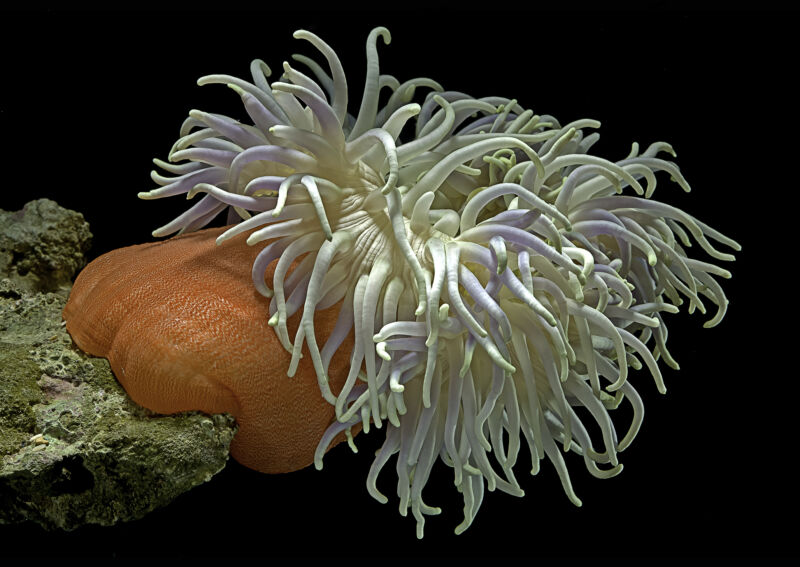Animals without a brain still form associative memories

Enlarge (credit: Paul Starosta)
Our brains are filled with lots of specialized structures that do things like process visual information, handle memories, or interpret language. One of the ways we try to understand what a brain is capable of is by comparing it with the brains of other species-what structures are present in the brain, and what behaviors those brains support.
But what if the animal doesn't have a brain? Presumably, most of the behaviors we've looked at require at least some sort of centralized nervous system. But there are a lot of species, including anemones, corals, and jellyfish, that have a fairly diffuse nerve net and lack anything that's clearly brain-like. But apparently, that's enough to perform associative learning, the sort most often (forgive me) associated with Ivan Pavlov.
Is our cnidarian learning?Associative learning is pretty much what it sounds like: Through repetition, an animal learns to associate an event with something that's otherwise unrelated to that event. In Pavlov's case, he trained dogs to associate a specific sound with being fed. Once trained, the dogs would start salivating once they heard the noise-even if food wasn't present. A huge range of animals are capable of associative learning, and it's easy to see how it can provide a selective advantage.